Gerald Levenston, Born 1914, Toronto, Canada
My Darling Mom - Gerald Levenston's WW2 Letters Home to Canada
By Gerald Levenston, Michael Levenston, Yuwa Hedrick-Wong & Fred Langan
This book is available for download on your iPad with iBooks or on your computer with iTunes.
See it in iTunes here.
Description: Canadian officer Lt. Colonel Gerald Levenston wrote over
160 wonderfully descriptive letters home to his widowed mother in
Toronto during World War 2. Gerald describes setting up the largest
hamburger stand in Europe for the Canadian troops, fighting Rommel's men
at the Battle of the Kasserine with the 17th/21st Lancers, giving
'marching orders' to surrendering Nazi armies in May 1945, and returning
261 priceless Van Gogh paintings to the Kroller-Muller State Museum from
an underground vault in Holland. Includes video interviews with Gerald.
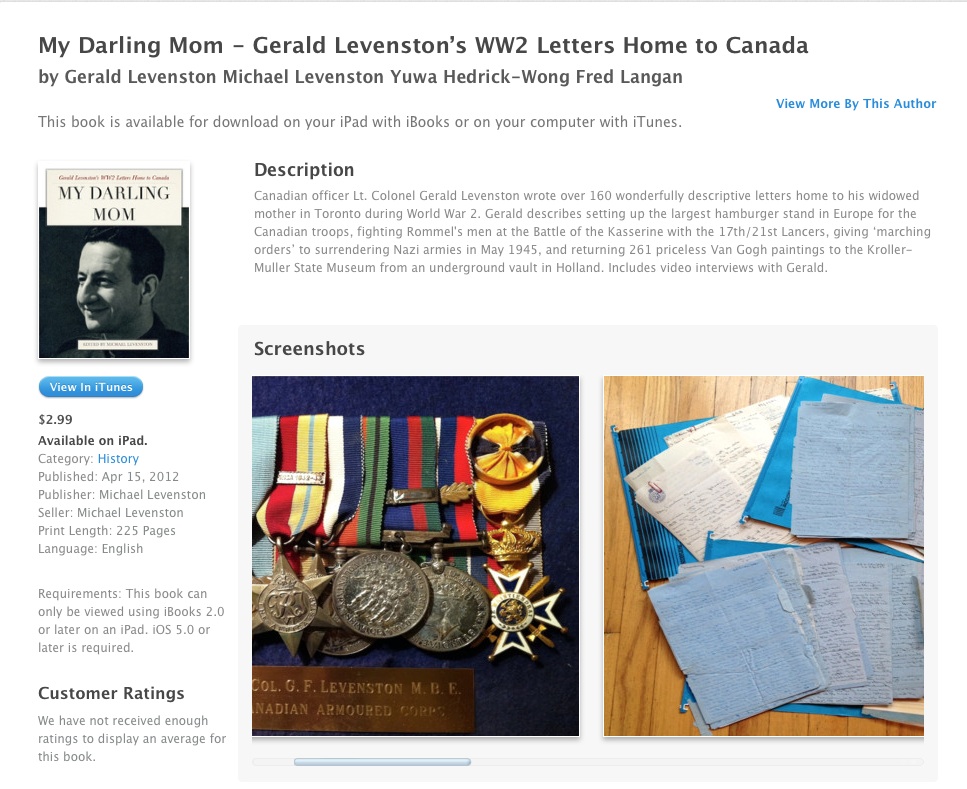
Also available on Amazon
My Darling Mom - Gerald Levenston's WW2 Letters Home to Canada
Who's Who in Business
Irresistible Appeal of Diamonds
February 20, 1954
Saturday Night
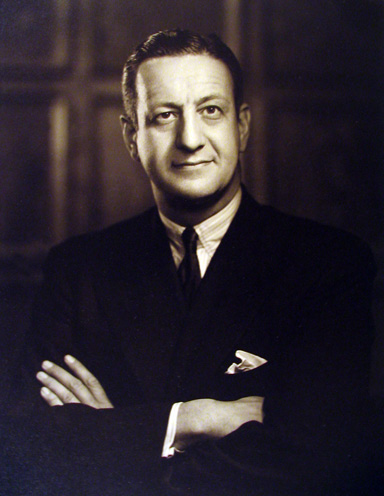
By John Wilcock
AS HEAD of Baumgold Brothers of Canada Limited, a wholly owned subsidiary of one of the world's largest diamond companies, Gerald Levenston spends a large part of each day inspecting diamonds. This work, although it may sound routine, never bores him; instead it has inspired him to more and more extravagant praises of the sparkling gem which takes up so much of his time.
"Actually," he says with a smile, "it takes up more time than it should. I find myself thinking about work on all sorts of occasions when I am supposed to be relaxing. But diamonds are like that. They're one of nature's wonders and we in the business can merely adapt them; we can't change methods of manufacture as one might with, say, fountain pens or plastic table tops."
Brown-eyed Gerald Levenston, a well built former Lieutenant-Colonel with dark hair that is greying and a pleasantly soft voice, never intended to enter the business at all, despite the fact that both his Scots-born father and his second cousin were well known at London's Hatton Garden, centre of the world's precious stone trade. Instead, after a schooling in Toronto, which culminated in a course at the University of Toronto, he went to England in search of a writing job and finding journalism overcrowded, did publicity work for a film company. One year later, however, in 1936, he returned to Toronto and became apprenticed to a diamond firm.
The war years kept him occupied in the army, first in the Infantry and the Canadian Armoured Corps and then for a while with a British tank regiment in North Africa. He was in France just after the invasion.
When he returned to Canada in 1946 the combination of his family background, his talent for appraising gems and his army record (he still carries a revolver, by the way) was irresistible to New York's Baumgold Bros. who hired him as General Manager of the Canadian company they were setting up.
Since that time his working days have been similar. Cut diamonds for jewellery - at present the Canadian firm does not handle industrial gems - arrive almost daily from the world's markets, and with the rest of the small staff, the 39-year-old General Manager takes his turn at sorting and grading the gems, each one of which is as individual as the woman who may eventually wear it.
Neatly-dressed Levenston wears no diamonds himself, a double banded gold and platinum ring being his only trinket, and he is non-committal about his wife's and 8-months-old daughter's liking for precious stones. (He also has two sons aged four and two.) But he admits that diamonds appear to be irresistible to most women, as the interest in the $15 million show his firm organized at the CNE last year would seem to prove.
His personal taste, as a collector, is satisfied by the antique furniture and china with which he fills his Toronto home. Back in England he used to race cars, too, but claims that he gave this up when he became a family man five years ago.
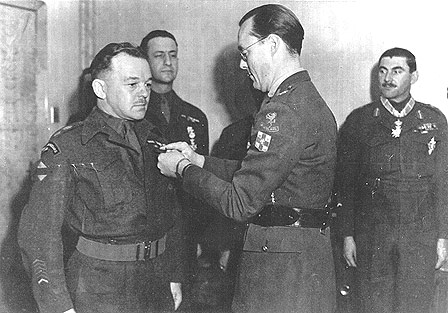
Prince Bernhard of the Netherlands decorating Canadians with the
Royal Order of Orange Nassau with Crossed Swords (1945). Gerald is next in line to receive his medal. Next to Gerald (to his left) is Lieutenant-General Guy Simonds, II Canadian Corps.
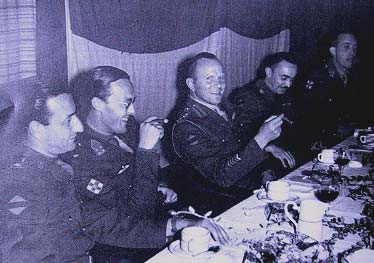
Gerald (Deputy Assistant Quatermaster-General, II Canadian Corps) at a dinner for Prince Bernhard of the Netherlands at the Summer Palace (1945). The Prince is wearing glasses and is smoking a cigar. Gerald is sitting at his right.

Some of Gerald's medals from WW2.
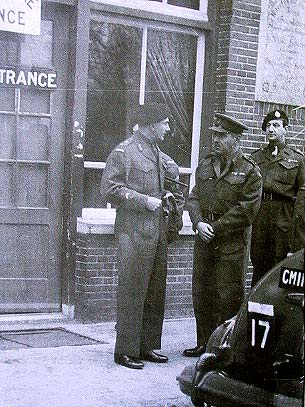
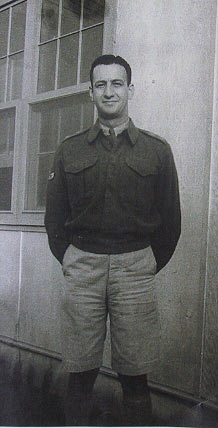
Globe and Mail Obituary
Veteran took great pride in Allied victory
Decorated for his leadership, he returned to Toronto after the war to become a successful jeweller
F.F. LANGAN
Special to The Globe and Mail
January 18, 2011
Lieutenant-Colonel Gerald Levenston, who died in Toronto on Dec. 21, was with the 2nd Canadian Corps in the final days of the war when the German unit they were fighting indicated it was ready to surrender. It was usual for the top-ranking officer to meet with the Germans to accept the surrender. This time it was different.
"The brigadier in charge of our unit was a well-educated man with a keen sense of history," Levenston said many years after the war. "Our brigadier's order was: 'Send Colonel Levenston. Let them surrender to a Jewish officer.'"
It was the first of many meetings with defeated German officers. In blue aerograms written home to his mother in Toronto he described several such encounters, including one on May 15, 1945, seven days after Germany surrendered.
"Tomorrow I attend a conference at German Army headquarters where I will have the very great pleasure of serving innumerable orders to the bastards and seeing that they do what they are told. It is a position I have wanted to be in for several years now."
After the surrender, Lieutenant-Colonel Levenston stayed on first in Germany and then went to the Netherlands, where he soon struck up a friendship with the curator of the Kroller-Muller Museum. Before the war, he had been editor of the arts magazine at the University of Toronto and the curator sought his help in retrieving a collection of about 260 works of art, at least 100 by Vincent van Gogh, which were hidden in a manmade cave.
On Sept. 17, 1945, Levenston led the mission to retrieve the Dutch art treasures and return them to the museum. The Dutch curator knew where they were - they had been hidden just before the German occupation - but he needed transport and men to move them.
"I simply asked the men and they went right to work as a voluntary effort," Levenston told an interviewer in 1961.
At the end of the war Levenston was Deputy Assistant Quartermaster-General 2 Canadian Corps. On Nov. 28, 1945, he was awarded an MBE (Member, Order of the British Empire). It stated: "As a result of his tireless efforts and careful planning, formations under command have been able to maintain themselves at the peak of operational efficiency."
In plain English, that meant he was able to find fuel, ammunition and food for those fighting their way through Holland and Germany. "It was a more difficult task as the supply stretched farther from the beaches of Normandy," said Steve Harris, director of history at the Department of National Defence in Ottawa.
Three weeks after receiving his MBE from King George VI at Buckingham Palace, Levenston was in Holland where Prince Bernhard made him an Officer of the Order of Orange-Nassau (with swords) in part because of his work saving the Dutch art.
Gerald Frederick Levenston was born in Toronto on Sept. 18, 1914. His parents were immigrants from Britain, where Levenstons had lived since the 18th century. There is a mention of a Levenston from his family in James Joyce's novel Ulysses. His father was a successful jeweller, but was wiped out in the crash of 1929 and died soon afterward. Young Gerald switched from a private school to the public Vaughan Collegiate. At the University of Toronto he took an honours degree in English and Philosophy.
As a boy he had made many trips to England, and after university he went to London and worked in the publicity department of a film company. That didn't work out, so he returned to Toronto and went into the jewellery business. When the war broke out he joined the officer's training plan at the University of Toronto.
"For my father no other part of his life was as memorable as the years 1939-1946," said his son Michael. "The war was a way for him to escape the stagnant '30s and to really show his drive, courage and talents."
Captain Levenston, as he was in 1943, was one of a small group of Canadians sent to fight with the British in North Africa to prepare for the invasion of Normandy the next year. He was with the 4th Canadian Armoured Brigade in England and was assigned the 17th/21st Lancers, where he was given command of a tank in the desert in Tunisia. In a letter home to his London-born mother, he described the British soldiers under his command.
"There is Hunzinga, my loader-operator, an ex-dance-band leader and drummer from Brighton; Pole, my driver, who used to sell ice cream for his papa in Melton Mowbray; and Dalziel, my gunner, a 'regular' soldier from Glasgow."
He took part in the Battle of the Kasserine Pass, when a combined American and British force faced Field Marshal Edwin Rommel and his Afrikakorps. The British and Canadians had fought the Germans before, but this battle was the first time in the Second World War that Allied forces faced the Germans together. The Allies, in particular the inexperienced American troops, were mauled in the battle. Afterward, Levenston wrote a 60-page confidential report for Canadian army headquarters.
He wrote this of the Kasserine battle on late afternoon of Feb. 20, 1943: "As the daylight failed, our tanks could be seen withdrawing slowly back behind a thin screen of smoke and firing as they came. With the darkness the ridge to the south was criss-crossed by livid streaks of tracer and every few seconds a reddish-white ball of fire would shoot over the plain beyond. The whole scene was dotted with blazing tanks."
There also were long periods away from the battlefield in North Africa. Levenston wrote that he became friendly with a local farmer, Abdullah ben Begacem, who began to teach him Arabic, using sign language at first. He also saw German propaganda, written in French and Arabic: "The Americans and English are friends of the Jews and wish to help them get into power. Do you wish to become slaves of the Jews?"
Levenston quoted the pamphlet and commented on it in the closing lines of his letter home: "So you see, my darling mom, that even here the Jew is being used as a means to Hitler's ends."
After the war Levenston returned to the jewellery business and became president of Baumgold Brothers of Canada, a subsidiary of an American company that specialized in importing diamonds to sell to retailers. His son said his father always carried a revolver in his briefcase but he wasn't certain if it was a Luger he brought home from the war.
On a trip to a jewellery convention in Vancouver in 1948, he met a young woman named Ruth Koenigsberg and fell in love on the spot. They were married after a four-day courtship and stayed married until her death in 1992.
Levenston was at one time a trustee of Royal Ontario Museum. Through his wartime connections with the Dutch museum he had helped, he was instrumental in arranging an exhibition of 140 van Gogh paintings at the Art Gallery of Ontario in 1961.
Levenston was an anglophile all his life. For decades he had a subscription to Country Life. At home he always dressed for dinner and sat afterward in his library reading and compiling his own detailed archives of the war.
When he retired he became a boulevardier on the Yonge Street strip in Rosedale, having coffee with friends and then lunch in restaurants such as Lakes. He had lost his animosity for the Germans, and one of his closet friends was a German immigrant who had been a boy during the war.
He leaves two sons and a daughter, four grandchildren and one great-grandchild.
Levenstons Migrate to the Internet
The Levenston and Stibbe Families (5000 names)
Some Irish
Levenstons
Scottish
Levenstons
A Century in Western
Canada
Mike's Martial Arts - 8th Degree Black Belt - San Sho Do
Michael
Levenston, Theatre Manager, 1855-1904
Revised June 14, 2015
cityfarmer@gmail.com






